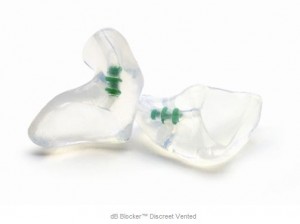The most common occupational illness for miners is hearing loss. Immediately noise levels come to mind – the large drilling machines, close proximity to loud machines and the reverberation off the walls of the mine. According to NIOSH and the CDC, by age 60, 75% of miners have a hearing impairment due to exposure to noise.

Hearing loss is 100% preventable and unfortunately, once it occurs, there is no cure. You may not even notice that the damage has occurred right away, because it causes no pain and the damage is not visible.
If you are a miner and have loss of hearing, you may experience these symptoms:
• Difficulty hearing warning signals
• Difficulty hearing what someone is saying
• Accidents
• Ringing or buzzing in your ears
• After you leave a noisy area, your hearing may seem dull or muffled
• Headaches
• Tiredness
• Stress
Miners Can Protect Their Hearing with Custom Ear Plugs
Do not wait to experience any of these symptoms before you protect your ears with hearing protection. Custom Protect Ear dB Blockers™ custom fit earplugs are more comfortable and offer superior hearing protection to any disposable earplug. However, did you know that they are more cost effective as well?
You can reduce your hearing protection costs by 60% over five years when an entire facility is fit.
dB Blockers™ are more comfortable because there is only one way for them to fit and they made for each individual. They also make it easy for workers to communicate with each other because of our proprietary tuned filter that allows users to hear better with the plugs in than if they take them out.
Our product is safer for miners because it allows them to hear. Hear warning signals, hear backup alarms, and hear the roof. Our dB Blockers™ are made from a non-flammable, hypoallergenic silicon blend (called SkinSoft™) unlike disposable earplugs, which are flammable and make users prone to ear infections. Disposable foam earplugs also swell when they come in contact with water or perspiration.
We urge you to consider Custom Protect Ear dB Blockers for your mine for a product that can be worn for an entire shift because if you can’t hear, it’s not clear.



